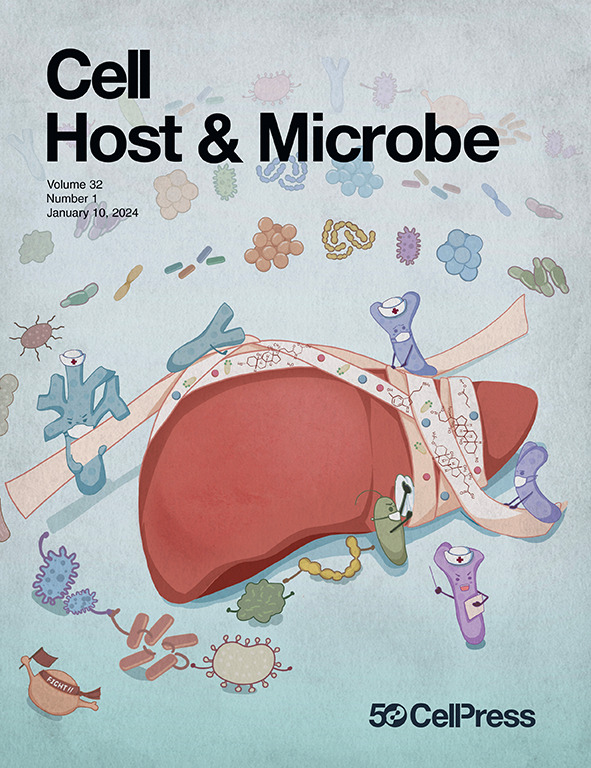微生物对代谢生态位形成的贡献因呼吸道而异
IF 18.7
1区 医学
Q1 MICROBIOLOGY
引用次数: 0
摘要
气道微生物组的变化与肺部的炎症反应和肺部疾病的结局有关。微生物组组成的区域变化可能对代谢环境产生空间影响,从而导致宿主反应的差异。在这里,我们分析了一组患者的呼吸微生物组(宏基因组/ metagenome/ mettranscriptome)和代谢组,揭示了微生物功能的地形差异,并在小鼠中使用同位素探测进一步描绘了这些差异。在人类中,类群的功能活性在整个呼吸道中各不相同,并与谷氨酸/谷氨酸和蛋氨酸等免疫调节代谢物相关。常见的口腔细菌,如普雷沃氏菌、链球菌和细孔菌,在下呼吸道功能上更活跃。给小鼠接种这些共生体会导致几种代谢物的区域性增加,尤其是蛋氨酸和酪氨酸。同位素标记证实了黑色素普雷沃氏菌在产生特定代谢物方面的贡献。这种微生物群落的功能特征揭示了肺部代谢组的地形变化及其对宿主反应的潜在影响。本文章由计算机程序翻译,如有差异,请以英文原文为准。

Microbial contribution to metabolic niche formation varies across the respiratory tract
Variations in the airway microbiome are associated with inflammatory responses in the lung and pulmonary disease outcomes. Regional changes in microbiome composition could have spatial effects on the metabolic environment, contributing to differences in the host response. Here, we profiled the respiratory microbiome (metagenome/metatranscriptome) and metabolome of a patient cohort, uncovering topographical differences in microbial function, which were further delineated using isotope probing in mice. In humans, the functional activity of taxa varied across the respiratory tract and correlated with immunomodulatory metabolites such as glutamic acid/glutamate and methionine. Common oral commensals, such as Prevotella, Streptococcus, and Veillonella, were more functionally active in the lower airways. Inoculating mice with these commensals led to regional increases in several metabolites, notably methionine and tyrosine. Isotope labeling validated the contribution of Prevotella melaninogenica in generating specific metabolites. This functional characterization of microbial communities reveals topographical changes in the lung metabolome and potential impacts on host responses.
求助全文
通过发布文献求助,成功后即可免费获取论文全文。
去求助
来源期刊

Cell host & microbe
生物-微生物学
CiteScore
45.10
自引率
1.70%
发文量
201
审稿时长
4-8 weeks
期刊介绍:
Cell Host & Microbe is a scientific journal that was launched in March 2007. The journal aims to provide a platform for scientists to exchange ideas and concepts related to the study of microbes and their interaction with host organisms at a molecular, cellular, and immune level. It publishes novel findings on a wide range of microorganisms including bacteria, fungi, parasites, and viruses. The journal focuses on the interface between the microbe and its host, whether the host is a vertebrate, invertebrate, or plant, and whether the microbe is pathogenic, non-pathogenic, or commensal. The integrated study of microbes and their interactions with each other, their host, and the cellular environment they inhabit is a unifying theme of the journal. The published work in Cell Host & Microbe is expected to be of exceptional significance within its field and also of interest to researchers in other areas. In addition to primary research articles, the journal features expert analysis, commentary, and reviews on current topics of interest in the field.
 求助内容:
求助内容: 应助结果提醒方式:
应助结果提醒方式:


